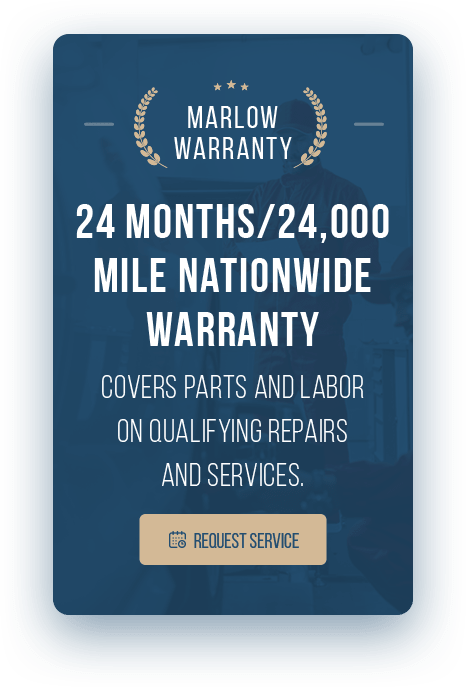Imagine driving down the highway, enjoying a beautiful day, when suddenly, your engine loses power, and your car comes to a standstill. You might not have realized it, but a failed timing belt or a cracked engine hose may have just turned your leisurely drive into a costly nightmare. As the heart of your vehicle, the engine relies on several key components that require proper care and maintenance to ensure a smooth, trouble-free ride. Among these vital components are the timing belt and engine hoses, which Marlow Automotive emphasizes as critical to vehicle health.
Understanding the importance of timely replacements and properly maintaining your timing belt and engine hoses goes a long way in increasing the lifespan of your vehicle and saving you from spending on expensive repairs down the line. Marlow Automotive knows that keeping up with these aspects of auto maintenance can seem daunting, but with the right guidance and support from expert technicians, ensuring the well-being of your car becomes a hassle-free experience.
Learn the importance of timing belt and engine hose replacement, the signs to look out for when they reach the end of their lifespan, and how regular maintenance can prevent major car issues and extend the life of your vehicle with Marlow Automotive’s expert advice. Explore recommendations for maintenance schedules and tips for finding a trusted auto repair shop, like Marlow Automotive, to help you keep your vehicle running smoothly for years to come.
Why Timing Belt and Engine Hoses Replacement Matters
The timing belt is a crucial part of your engine that synchronizes the rotation of the crankshaft and camshaft, allowing the engine valves to open and close at the appropriate times. It’s often a somewhat overlooked aspect of vehicle maintenance, but the timing belt can cause severe engine damage if neglected. A damaged timing belt can lead to a range of issues, such as misfiring cylinders, bent valves, and even a destroyed engine, leading to expensive repairs or even engine replacement.
Similarly, engine hoses are essential for transporting vital fluids like engine coolant, fuel, and oil to various parts of your vehicle. If an engine hose fails, it can cause coolant, fuel, or oil leaks, negatively impacting your vehicle’s overall health. In some cases, failure to replace engine hoses can lead to an engine overheating and, at worst, a total engine failure. Preventative engine hose replacement is just as crucial as timing belt maintenance in avoiding unnecessary repair costs and prolonging your engine’s life.
Regular maintenance and timely replacements for both the timing belt and engine hoses can prevent potential engine damage, save you money in the long run, and extend the lifespan of your vehicle.
Signs that Your Timing Belt and Engine Hoses Need Replacement
To ensure optimal performance, it’s vital to know the warning signs that indicate it might be time to replace your timing belt and engine hoses. Keep an eye out for these red flags to prevent engine damage and unnecessary repair costs:
1. Unusual Noises: A worn-out timing belt often generates a loud, squeaking, or rattling noise. If you notice a high-pitched sound coming from your engine, it may be time to inspect your timing belt.
2. Engine Misfire: If your timing belt slips, the engine valves can become out of sync, leading to misfires. An engine misfire can potentially cause significant damage to the engine, and, in turn, the vehicle’s performance.
3. Engine Leaks: Cracked or deteriorated engine hoses can result in fluid leaks, which may be seen as puddles beneath your vehicle. Pinpointing the leak’s source can help determine which engine hose needs replacement.
4. Overheating: If your engine is consistently overheating, it could be due to a faulty engine hose. Check for damage or wear on the hoses to avoid further complications.
5. Visual Inspection: Regularly examine your timing belt and engine hoses for signs of wear, such as cracks, splits, or glazing on the belt, and softened, hardened, or cracked hoses. Taking early action can prevent more significant issues down the line.
Recommended Maintenance Schedules for Timing Belt and Engine Hoses Replacement
Adhering to a maintenance schedule can help you avoid the potential engine damage and costly repairs that may result from a timing belt or engine hose failure. While it’s crucial to refer to your vehicle’s owner’s manual for specific recommendations, the following guidelines can serve as a useful starting point:
1. Timing Belt: Most manufacturers recommend replacing the timing belt between 60,000 and 100,000 miles. However, factors such as driving habits, environmental conditions, and the type of vehicle can impact this recommendation.
2. Engine Hoses: It’s generally suggested to replace your engine hoses every four years or 60,000 miles to prevent unexpected breakdowns. However, regular visual inspection and monitoring for leaks can help identify potential issues earlier.
Finding the Right Auto Repair Shop for Timing Belt and Engine Hoses Replacement
Choosing a trusted auto repair shop is essential to ensuring the proper care and maintenance of your vehicle. Here are some tips to help you find the right facility for your timing belt and engine hose replacement:
1. Research and Read Reviews: Utilize online resources, such as review websites, to find a reputable auto repair shop in your area. Look for facilities with high ratings and positive customer feedback.
2. Ask for Recommendations: Consult with friends, family, or coworkers who have had similar services done on their vehicles. Personal recommendations can be a reliable source for finding a trustworthy repair shop.
3. Verify Certification: Ensure that the technicians working on your vehicle are certified by reputable organizations such as the National Institute for Automotive Service Excellence (ASE).
4. Obtain Multiple Quotes: Request quotes from various auto repair shops to compare costs and ensure fair pricing for your timing belt and engine hoses replacement.
5. Trust Your Instincts: Visit the potential repair facilities in person, observe their customer service, and trust your gut feeling before settling on a decision.
Conclusion
Regular maintenance and timely replacements of your timing belt and engine hoses are essential steps to prolong your vehicle’s lifespan and prevent costly repairs. By recognizing the warning signs of wear, adhering to maintenance schedules, and partnering with a trusted auto repair shop, you can drive confidently, knowing your vehicle is in good hands.
Don’t wait for a sudden breakdown or costly engine damage. Schedule a timing belt and engine hoses inspection with Marlow Automotive today and drive confidently, knowing your vehicle is in good hands!


